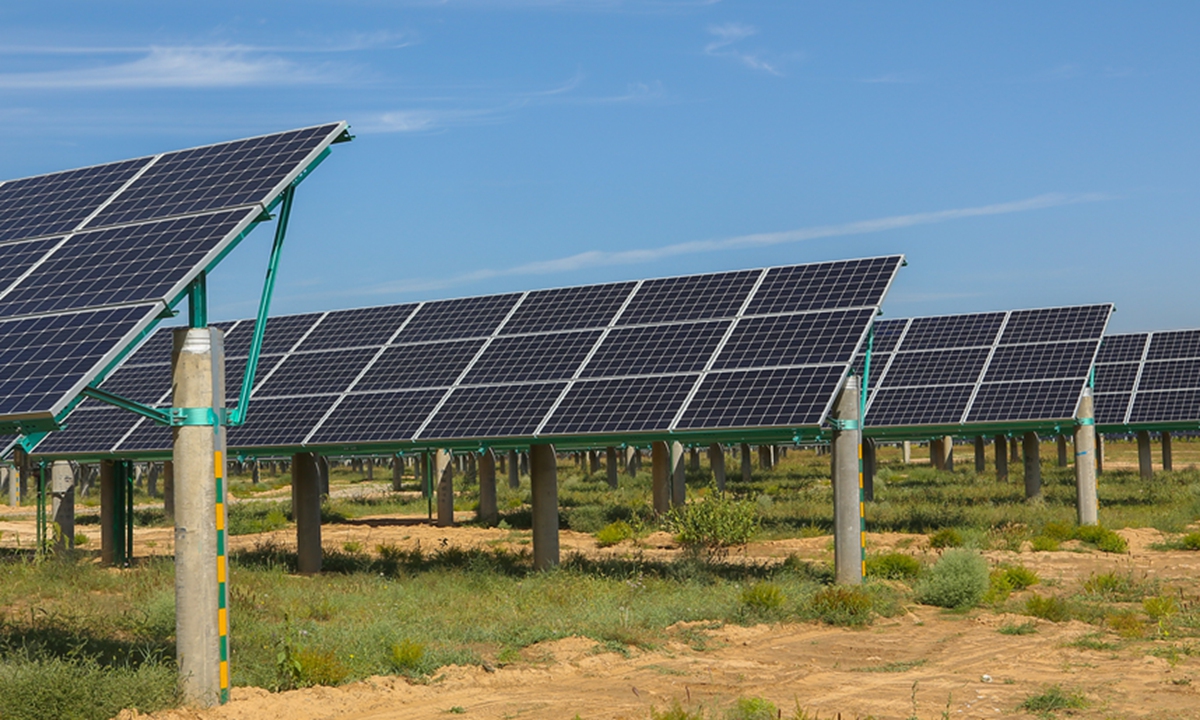
Solar panels at the solar power station of Panda Green Energy, in Datong, Shanxi Province. Photo: Courtesy of UNDP China
A total of 5,000 solar panels were put into use at an expressway section linking Southwest China’s Sichuan and Yunnan provinces on Wednesday. The panels are expected to generate 4.22 million kilowatt hours (kW) annually, in an effort to boost power supply and ease the power crunch in the province.
Experts believe that the development of wind energy and the photovoltaic industry in Sichuan can supplement its main source of electricity, which is hydroelectric power.
The solar panel project is the first distributed solar project that integrates transport and energy in Sichuan. Thanks to the photovoltaic power project, the 41-kilometer section of the expressway in Sichuan is now fully self-sufficient in clean energy, with 80 percent of the electricity directly transferred to the State grid, thepaper.cn reported.
The solar modules have been put up on highway slopes, roofs, dump sites, tunnel isolation zones, service areas and toll booths, making full use of idle land and space.
In addition, the equipment adopts a cutting-edge photovoltaic tracking system, which can rotate in the direction of the sun and make best use of the solar power with a 20 percent increase in power generation compared with traditional equipment.
Sichuan Province can make good use of wind and photovoltaic power, Lin Boqiang, director of the China Center for Energy Economics Research at Xiamen University, told the Global Times on Thursday, adding that Sichuan is currently over-dependent on hydroelectric power.
In the summer season, wind and photovoltaic supply is expected to make up for power shortages caused by low rainfall. During the rainy season, when wind and photovoltaic output are weak, hydropower can be generated at full capacity, Lin said.
Lin noted that the areas with abundant wind resources are mostly mountainous areas, which are suitable for distributed development of wind power and flexible installation.
Sichuan’s photovoltaic resources are also mostly distributed in remote mountainous areas which are suitable for distributed solar photovoltaic systems, small photovoltaic systems and rooftop photovoltaic power generation systems, Lin added.
In recent years, the construction of wind power in Sichuan has accelerated. At the end of 2021, the province's wind power installed capacity reached 5.273 million kW, an increase of 3.2 times compared with the end of 2016, accounting for 4.6 percent of the installed power generation capacity.
By the end of 2021, Sichuan had 1.96 million kW of photovoltaic power plants in operation, which is still in its infancy.
“At present, wind power and photovoltaic power take up a small proportion, but offer a future development direction in Sichuan’s energy structure,” Lin said, adding that it might take more than ten years for wind and solar power to help solve the energy crunch caused by drought.




